Home>diy>Building & Construction>How Long Does Road Construction Take
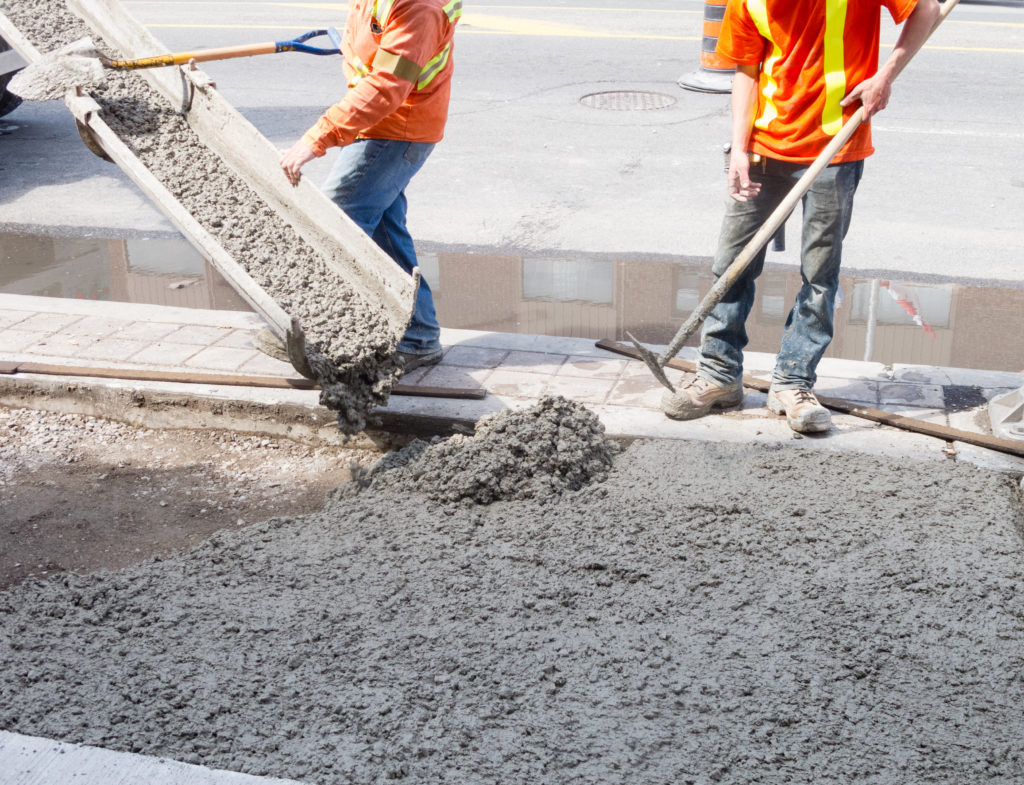

Building & Construction
How Long Does Road Construction Take
Modified: January 24, 2024
Discover how long road construction projects typically take and get insights into the timeline of building construction. Explore the factors that can affect the duration of these projects and plan accordingly.
(Many of the links in this article redirect to a specific reviewed product. Your purchase of these products through affiliate links helps to generate commission for Storables.com, at no extra cost. Learn more)
Introduction
Road construction is a complex and essential process that plays a crucial role in transportation infrastructure development. Whether it’s a small road repair project or a major highway expansion, understanding the factors that affect the construction time can be beneficial for both project managers and the general public.
Building a road involves various stages, including planning, designing, procuring materials, clearing and grading, drainage and utilities, base and pavement construction, traffic control, road markings, and final inspections. Each phase requires careful coordination and expertise to ensure durability, safety, and efficiency.
In this article, we will explore the different factors that influence road construction time and the steps involved in each phase. Understanding these processes can help us appreciate the effort and time required to build and maintain our road networks.
Key Takeaways:
- Road construction timelines are influenced by factors such as project size, weather conditions, and permitting processes. Thorough planning and coordination are essential for successful and efficient road infrastructure development.
- The road construction process involves multiple phases, from planning and design to cleanup and final inspection. Each phase plays a crucial role in creating safe, durable, and visually appealing road infrastructure for communities.
Read more: Why Does Road Construction Take So Long
Factors Affecting Road Construction Time
Several factors can impact the duration of road construction projects. These factors can vary depending on the scope and complexity of the project. Here are some of the key factors that can affect the construction time:
- Project Size: The size of the road construction project plays a significant role in determining the time required for completion. Larger projects, such as highway expansions or new road constructions, are likely to take longer compared to smaller repair or maintenance projects.
- Weather Conditions: Weather conditions can have a significant impact on road construction timelines. Extreme weather events like heavy rain, snow, or extreme heat can delay construction work, making it challenging to carry out activities such as clearing and grading, as well as pavement installation.
- Geographical Factors: The geographical terrain and soil conditions in the construction area can also affect the time required for road construction. Areas with challenging terrain or unstable soils may require additional engineering and preparation work, prolonging the overall construction timeline.
- Permitting and Approvals: Obtaining the necessary permits and approvals from local authorities can sometimes be a lengthy process. Road construction projects often require multiple permits, including environmental clearances, utility approvals, and right-of-way acquisitions. Delays in obtaining these permits can significantly impact project timelines.
- Availability of Materials and Equipment: The availability of construction materials, such as asphalt, concrete, and aggregate, can influence construction progress. Similarly, having the required equipment and machinery on-site and in good working condition is crucial for efficient construction operations. Delays in material delivery or equipment breakdowns can cause project delays.
- Workforce and Labor Availability: The availability of skilled labor and workforce plays a vital role in road construction. Adequate staffing and skilled labor are essential for various construction activities, including excavation, paving, and traffic control. Shortages of skilled labor or labor disputes can extend project timelines.
- Environmental Considerations: Environmental factors, such as protected habitats, wetlands, or cultural heritage sites, can influence road construction timelines. Projects may require additional measures for environmental protection and mitigation, which can add time to the construction process.
- Public Utilities and Services: Road construction projects often involve coordination with public utilities, including water, gas, electricity, and telecommunications providers. Relocating utilities, if necessary, requires careful planning and can cause delays if not properly managed.
By considering these factors during the planning and design phases and effectively managing them during construction, project managers can better estimate and optimize road construction times. Through proper planning and coordination, road construction projects can be completed efficiently, ensuring durable and safe road infrastructure for the communities they serve.
Planning and Permitting Phase
The planning and permitting phase is a crucial step in road construction projects. It involves extensive research, analysis, and coordination to ensure that the proposed project meets the necessary regulations and requirements. This phase typically includes the following steps:
- Project Identification and Feasibility: In this initial stage, the need for the road project is identified, and its feasibility is assessed. Factors such as traffic volume, connectivity, economic benefits, and environmental impact are considered to determine the viability of the project.
- Route Selection and Alignment: Once the project’s feasibility is established, the next step is to determine the most suitable route and alignment for the road. This involves studying various factors such as topography, land use, environmental impact, and community feedback to select the optimal route.
- Environmental Impact Assessment: A thorough analysis of the project’s potential environmental impact is carried out. This includes evaluating its effects on air quality, water resources, wildlife habitats, and cultural heritage sites. Mitigation measures are proposed to minimize any adverse effects.
- Design Development: Based on the selected route, detailed engineering designs are developed. This includes creating alignment plans, cross-section profiles, and drainage designs to ensure that the road is designed to proper standards for safety and functionality.
- Public Consultation: During this phase, public consultations are conducted to gain input from local communities, stakeholders, and relevant authorities. Their feedback helps shape the project design, addresses concerns, and ensures that the project aligns with community needs and interests.
- Permitting and Approvals: This is a critical step where the necessary permits and approvals are sought from regulatory agencies, including environmental permits, utility clearances, and right-of-way acquisitions. The process involves rigorous documentation, assessments, and negotiations.
- Cost Estimation and Funding: During this phase, an accurate estimation of the project’s cost is made, accounting for construction materials, labor, equipment, and any required land acquisitions. Funding for the project is secured through government budgets, grants, or private financing.
The planning and permitting phase can be time-consuming due to the extensive research, analysis, and coordination involved. However, thorough planning is key to a successful road construction project, as it ensures that all necessary legal and regulatory requirements are met and that the project addresses community needs while minimizing environmental impacts.
Design and Engineering Phase
The design and engineering phase of road construction projects is crucial in creating detailed plans and specifications for the construction process. This phase involves translating the project requirements and objectives into tangible designs that can be implemented. The key steps involved in this phase are as follows:
- Data Collection and Survey: Detailed surveys and data collection are conducted to gather information about the project site. This includes topographic surveys, geotechnical investigations, utility mapping, and soil testing. The data obtained during this phase provides crucial information for design and engineering decisions.
- Preliminary Design: Preliminary design involves creating a conceptual layout of the road alignment, including curves, interchanges, and intersections. The design is based on factors such as traffic flow, safety considerations, and environmental constraints. Preliminary designs are reviewed by various stakeholders for input and feedback.
- Final Design: Based on the feedback received during the preliminary design review, the final design is developed. This includes detailed plans for road cross-sections, pavement design, drainage systems, signage, and traffic control measures. The final design ensures that the road complies with all necessary safety standards and regulations.
- Structural Design: In this stage, structural elements such as bridges, tunnels, retaining walls, and culverts are designed. Structural engineers determine the appropriate sizes, materials, and construction methods to ensure that these elements can withstand the expected loads and provide structural integrity.
- Materials Selection: The selection of construction materials is a critical component of the design process. Engineers consider factors such as climate conditions, traffic volume, and expected loadings when choosing materials for the pavement, base layers, and other road components. The objective is to ensure durability and longevity of the road infrastructure.
- Utility Coordination: During the design phase, coordination with public utilities is essential. This includes identifying and planning for the relocation or adjustment of underground utilities that may be in conflict with the proposed road alignment. Clear communication and planning are necessary to avoid construction delays caused by utility conflicts.
- Quality Assurance and Value Engineering: Throughout the design process, engineers conduct technical reviews, quality checks, and value engineering assessments. This ensures that the design meets the project’s objectives while also optimizing cost, functionality, and constructability. Any necessary revisions or adjustments are made during this phase.
The design and engineering phase lays the foundation for successful road construction by creating comprehensive and detailed plans for construction teams to follow. Careful consideration is given to factors such as safety, functionality, and environmental impact, ensuring the road is designed to meet the needs of its users for years to come.
Procurement Phase
The procurement phase of road construction projects involves the acquisition of materials, equipment, and services necessary for the actual construction process. This phase ensures that all the required resources are procured in a timely and cost-effective manner. The procurement phase consists of the following key steps:
- Materials Procurement: The procurement of construction materials is crucial for the road construction project. This includes sourcing aggregates, asphalt, concrete, steel, and other materials required for the project. Suppliers are selected based on factors such as price, quality, availability, and delivery schedule.
- Equipment and Machinery: The procurement of specialized equipment and machinery is essential to carry out various construction activities. This includes the purchase or rental of heavy machinery like excavators, graders, paving machines, and rollers. Equipment is selected based on the project’s requirements and specifications.
- Contractor Selection: Road construction projects often involve hiring contractors to carry out the actual construction work. The procurement phase includes the process of selecting contractors through a competitive bidding process. Contractors submit proposals outlining their qualifications, experience, and cost estimates for the project.
- Contract Negotiation: Once the contractor is selected, negotiations are carried out to finalize the terms and conditions of the construction contract. This includes detailing the scope of work, project timeline, payment terms, and dispute resolution mechanisms. Careful negotiations ensure that both parties have a clear understanding of their respective responsibilities.
- Subcontractor Contracts: Depending on the scale and complexity of the project, subcontractors may be hired for specialized tasks such as electrical work, landscaping, or pavement marking. Subcontractor contracts are negotiated and finalized during the procurement phase to ensure all required services are accounted for in the construction process.
- Insurance and Bonding: Contractors are typically required to provide proof of insurance and bonding to protect against potential risks and liabilities during the construction process. This includes liability insurance, workers’ compensation insurance, and performance bonds to guarantee the completion of the project as per the contract terms.
- Supplier and Contractor Management: Once the procurement phase is complete, ongoing management of suppliers and contractors is necessary. This includes monitoring the delivery of materials, ensuring compliance with contractual obligations, and resolving any issues or disputes that may arise during the construction process.
The procurement phase requires careful planning and coordination to ensure that all necessary resources are procured efficiently. Effective procurement practices help to optimize costs, maintain project timelines, and ensure the availability of quality materials and equipment for the road construction project.
Read more: Why Road Construction Takes So Long
Clearing and Grading Phase
The clearing and grading phase is one of the initial stages of road construction projects. It involves the preparation of the construction site by removing vegetation, rocks, and obstructions and creating a level surface for further construction work. This phase is crucial for establishing the foundation of the road and includes the following key steps:
- Site Clearing: The first step in the clearing and grading phase is to clear the construction site of any vegetation, trees, shrubs, and brush. This is done to create a clear and open space for construction activities. Care is taken to minimize environmental impact and preservation of any protected habitats or heritage sites.
- Utility Identification and Relocation: During the site clearing process, utilities such as water, gas, electricity, and telecommunications lines are identified and marked. If any utilities lie within the proposed road alignment, they may need to be relocated or adjusted to make way for the road construction. This requires coordination with utility providers and may add time to the clearing and grading phase.
- Excavation and Earthmoving: Excavation involves the removal of soil, rocks, and other debris from the construction site. This is done to create a level subgrade for the road construction. Topsoil is often stockpiled for later use in landscaping or re-vegetation efforts. Excavation may also include the removal of existing pavement or structures, if necessary.
- Grading and Compaction: Once the excavation is complete, the site is graded to establish the desired road cross-section and slope. Grading ensures proper drainage and the smooth flow of water off the road surface. Compaction is carried out to ensure the stability and load-bearing capacity of the subgrade, which will support the road layers.
- Culvert Installation: Culverts are structures that allow for the passage of water under the road. During the clearing and grading phase, culverts are installed in areas where water flow needs to be managed. This includes areas with natural drainage patterns or where the road crosses streams, ditches, or drainage channels.
- Erosion and Sediment Control: Measures are implemented during the clearing and grading phase to prevent erosion and manage sediment runoff from the construction site. This includes the installation of silt fences, erosion control blankets, and sediment basins to protect nearby water bodies and minimize environmental impact.
- Environmental Mitigation: Environmental mitigation efforts are undertaken during the clearing and grading phase to minimize the impact on sensitive habitats and protected species. This may involve the preservation or creation of wetland areas, planting of native vegetation, or establishing wildlife corridors around the construction site.
The clearing and grading phase sets the stage for the subsequent construction activities by creating a stable and level surface for the road. Proper site preparation and environmental considerations during this phase are fundamental to ensure the long-term success and sustainability of the road construction project.
Road construction can take anywhere from a few weeks to several years, depending on the size and complexity of the project. Factors such as weather, funding, and unexpected issues can also impact the timeline.
Drainage and Utilities Phase
The drainage and utilities phase is a critical component of road construction projects. It involves the installation of drainage systems and the coordination of various utilities that are essential for the proper functioning of the road. This phase ensures that adequate drainage is provided to manage water runoff and that utilities such as water, gas, electricity, and telecommunications are appropriately integrated into the road infrastructure. The key steps involved in this phase are as follows:
- Drainage System Design: Based on the project requirements and site conditions, engineers design a drainage system that effectively manages water runoff from the road surface. This includes the design of stormwater ditches, culverts, catch basins, and retention or detention ponds to control the flow of water and prevent flooding or erosion.
- Drainage Installation: Once the drainage system design is finalized, construction crews proceed with the installation of drainage infrastructure. This involves excavating and grading along the road alignment to create spaces for drainage pipes, culverts, and other drainage structures. The installation ensures proper slope and alignment to facilitate the efficient flow of water.
- Utility Coordination and Relocation: During the drainage and utilities phase, coordination with utility providers is crucial. Any necessary adjustments, relocations, or installations of utilities are carried out to ensure that they are properly integrated with the road infrastructure. This includes water lines, sewer lines, gas lines, electrical cables, and telecommunications conduits.
- Stormwater Management: In addition to the primary drainage system, stormwater management practices are implemented to control stormwater runoff and minimize its impact on the surrounding environment. This may include the use of porous pavements, bio-retention areas, and other Best Management Practices (BMPs) to improve water quality and reduce the volume of stormwater runoff.
- Utility Connections: Once utilities are properly located and coordinated, connections are made to link the road infrastructure with the respective utility systems. This includes the installation of water supply connections, sewer connections, electrical connections, and telecommunications connections. Ensuring proper connections is crucial for the functionality and utility of the road.
- Utility Access Points: Access points are created along the road alignment to allow for easy maintenance and repair of utilities. This includes the installation of manholes, valve boxes, and utility pedestals. These access points enable utility providers to access and service their respective infrastructure without disrupting the road surface.
- Street Lighting: Installation of street lighting is an essential part of the drainage and utilities phase. Street lights are strategically placed along the road to enhance visibility, improve safety, and ensure proper illumination for motorists. This includes the installation of light poles, fixtures, and electrical connections.
The drainage and utilities phase ensures that road construction projects consider the integration of necessary utilities and effective management of water runoff. Proper design and coordination during this phase contribute to the functionality, safety, and long-term durability of the road infrastructure.
Base and Pavement Construction Phase
The base and pavement construction phase is a critical stage in road construction projects. This phase involves the construction of a sturdy base layer and the application of pavement materials to create a smooth and durable driving surface. The base and pavement construction phase typically includes the following key steps:
- Base Preparation: Before the pavement can be installed, the construction site undergoes necessary preparation for the base layer. This includes ensuring proper grading and compaction of the subgrade to provide a stable foundation for the road. Subgrade soils are compacted to meet required density and moisture content specifications.
- Aggregate Placement: A layer of aggregates, such as crushed stone or gravel, is placed on top of the compacted subgrade. The quality and gradation of the aggregates are important factors in providing stability and strength to the road. The aggregates are evenly spread and compacted to achieve the desired thickness and density.
- Base Layer Construction: The construction of the base layer typically involves the application of multiple sub-layers. This may include the placement and compaction of base course materials, such as crushed stone or stabilized soil. Each layer is compacted to achieve the required density and thickness, providing a solid base for the pavement.
- Pavement Materials: Depending on the project specifications, different types of pavement materials may be used. This can include asphalt, concrete, or other specialized materials. The choice of pavement materials depends on factors such as traffic volume, climate conditions, and project budget.
- Pavement Installation: The pavement materials are applied using specialized equipment and techniques. For asphalt pavement, hot mix asphalt (HMA) is typically used. The asphalt is laid and compacted to achieve the desired thickness and smoothness. For concrete pavement, the concrete mixture is poured and finished to create a durable and even surface.
- Pavement Compaction: After the pavement materials are applied, they undergo compaction to ensure proper density and stability. Compaction is carried out using compactors or rollers to remove any air voids and provide uniformity to the pavement surface. Proper compaction is crucial to prevent premature failure and ensure long-term durability.
- Surface Treatments: Depending on the project requirements, additional surface treatments may be applied to the pavement. This can include applications such as seal coating or road striping. These treatments help improve the appearance, safety, and longevity of the road by protecting the pavement from deterioration and providing visual cues for drivers.
- Quality Control and Testing: Throughout the base and pavement construction phase, quality control measures are implemented to ensure the materials and construction processes meet the required standards. This includes conducting laboratory tests on the materials, monitoring compaction rates, and verifying the thickness and smoothness of the pavement.
The base and pavement construction phase is crucial for establishing a strong and durable driving surface. Attention to detail, proper selection and placement of materials, and adherence to quality control measures are vital to ensure the longevity and functionality of the road infrastructure.
Traffic Control and Detours
Traffic control and detours are integral parts of road construction projects. During the construction phase, it is essential to manage the flow of traffic and ensure the safety of both motorists and construction workers. The aim is to minimize disruptions and maintain a smooth and efficient traffic flow. The traffic control and detour phase typically involves the following key steps:
- Traffic Management Planning: Before the construction work begins, a comprehensive traffic management plan is developed. This plan takes into account the project timeline, anticipated traffic volumes, and potential impacts on the surrounding road network. The goal is to minimize inconvenience to road users while ensuring the safety of all stakeholders.
- Temporary Traffic Control: Temporary traffic control measures are implemented during the construction phase to manage the movement of vehicles and pedestrians. This includes the installation of signs, barricades, and temporary traffic signals to alert drivers of changing conditions and guide them through the construction zone.
- Work Zone Layout: The work zone layout is carefully planned to maintain a safe distance between construction activities and passing vehicles. Proper identification and separation of construction areas, through the use of cones or barriers, ensure that workers are protected and traffic can flow smoothly around the work zone.
- Speed Limit Reductions: Speed limits within the construction zone are reduced to ensure the safety of both workers and motorists. Lower speed limits help to minimize the risk of accidents and provide drivers with adequate time to react to changing conditions within the work zone.
- Detour Routes: In some cases, detour routes may be necessary to redirect traffic away from the construction area. Detour signs are installed to guide drivers along the alternate routes, ensuring that traffic can maneuver safely around the construction zone. Detours are typically planned and communicated well in advance to minimize confusion and inconvenience.
- Temporary Traffic Signals: In situations where traffic flow needs to be controlled, temporary traffic signals may be installed. These signals help to manage the alternating movement of vehicles during construction activities, ensuring the safety and efficient flow of traffic through the work zone.
- Pedestrian Safety Measures: Pedestrian safety is a critical consideration in traffic control. Temporary sidewalks or pedestrian walkways may be constructed to provide safe passage for pedestrians around the construction area. Signage and barriers are used to direct pedestrians to these designated areas.
- Continuous Monitoring and Adjustments: Throughout the construction phase, traffic control measures are continuously monitored to assess their effectiveness. Adjustments may be made based on real-time traffic conditions and feedback from road users and construction personnel. This ensures that traffic control measures remain responsive to changing traffic patterns and minimize disruptions.
Traffic control and detours are crucial for maintaining safety and facilitating a smooth traffic flow during road construction projects. Proper planning, effective communication, and ongoing monitoring are key to ensuring that road users are informed and can traverse the construction zone with minimal inconvenience and risk.
Read more: How Long Does New Construction Take
Road Markings and Signage Installation Phase
The road markings and signage installation phase is a critical component of road construction projects. This phase involves the application of road markings and the installation of signage to provide clear guidance, enhance safety, and improve the overall functionality of the road. The road markings and signage installation phase typically includes the following key steps:
- Design and Planning: Road marking and signage plans are developed based on the project’s specifications and regulatory requirements. The design includes the placement and dimensions of lane markings, crosswalks, symbols, and signage. Special considerations are given to intersections, curves, and areas requiring additional guidance for motorists.
- Preparation: Prior to the installation of road markings and signage, the road surface is cleaned to ensure proper adherence of materials. Any debris, dirt, or loose particles are removed to create a smooth and clean surface. This preparation process enables the road markings and signage to be applied accurately and securely.
- Road Markings: Road markings are applied to indicate traffic lanes, turning lanes, crosswalks, and other essential elements. The markings are painted or applied using thermoplastic materials, depending on the project specifications. Specialized equipment, such as line striping machines or automated road marking systems, are used to ensure precision and consistency.
- Signage Installation: Signage is installed along the road to provide critical information and guidance to drivers. This includes regulatory signs, warning signs, guide signs, and informational signs. Signs are securely mounted on posts or structures to ensure visibility and durability. Special attention is given to proper placement, height, and clear line of sight for road users.
- Raised Pavement Markers: Raised pavement markers, also known as road studs or reflectors, are installed to enhance visibility, especially during nighttime or adverse weather conditions. These markers use reflective materials and/or solar-powered LED lights to provide clear guidance and to delineate lanes, curves, or other areas of the road.
- Signalization: If traffic signals are part of the project, including traffic lights or pedestrian crossing signals, they are installed and synchronized to ensure proper functioning. Wiring connections, signal heads, and control boxes are carefully installed to facilitate the safe and efficient flow of traffic at intersections.
- Maintenance and Upkeep: After the road markings and signage are installed, routine maintenance and inspections are performed to ensure their performance and visibility. This includes repainting faded road markings, replacing damaged signs, and keeping vegetation clear around signs for maximum visibility.
- Accessibility Considerations: Road markings and signage are designed and installed with considerations for accessibility requirements. This includes providing clear visual contrast, tactile cues, and audible signals to assist people with disabilities in navigating the road environment safely.
The road markings and signage installation phase is crucial for creating an organized and safe road network. Proper design, accurate installation, and regular maintenance of road markings and signage help to improve road user experience, enhance traffic flow, and promote overall road safety.
Cleanup and Final Inspection
The cleanup and final inspection phase marks the completion of the road construction project. It involves thorough inspections, cleaning, and final touches to ensure that the road meets all standards and is ready for public use. The cleanup and final inspection phase typically includes the following key steps:
- Inspection: A comprehensive inspection is conducted to evaluate the quality and completeness of the road construction project. This includes checking the alignment, smoothness, and overall condition of the road surface. Any deficiencies or issues that may impact the road’s functionality or safety are identified for resolution.
- Deficiency Rectification: If any deficiencies or non-compliance issues are identified during the inspection, necessary rectification measures are taken. This may involve repairing damaged pavement, correcting uneven surfaces, addressing drainage issues, or replacing malfunctioning signage or road markings. Rectifications are carried out to ensure that the road meets the required standards.
- Cleanup: The construction site is thoroughly cleaned to remove any debris, construction materials, or equipment that may still be present. This includes the proper disposal of waste materials and restoration of the construction area to its pre-construction condition as much as possible. Strive for environmental sustainability when disposing of construction waste.
- Landscaping and Beautification: Landscaping efforts may be undertaken to enhance the aesthetics and ecological value of the road construction project. This can include planting trees, shrubs, or grass, as well as implementing erosion control measures or installing decorative features. Beautification efforts aim to integrate the road into the surrounding environment harmoniously.
- Final Sign-off: Once the inspection, rectification, and cleanup processes are complete, final sign-off is obtained from regulatory authorities or project stakeholders. This signifies that the road construction project has met all necessary requirements and is deemed safe and ready for use by the public.
- Documentation and Handover: Detailed documentation, including as-built drawings, material records, inspection reports, and compliance certificates, is prepared as part of the project handover process. This documentation ensures that all project information is properly recorded and can serve as a reference for future maintenance or expansion efforts.
- Public Announcement: Following the completion of the cleanup and final inspection phase, a public announcement is made to inform the community and road users about the opening of the road. This may involve media releases, notifications on municipal websites, or signage indicating the completion and reopening of the road for regular traffic.
The cleanup and final inspection phase signifies the successful completion of the road construction project. It ensures that the road is safe, functional, and visually appealing for the benefit of road users and the surrounding community. Proper attention to detail, comprehensive inspections, and meticulous cleanup efforts contribute to the overall success and quality of the road construction project.
Conclusion
Road construction is a complex process that involves multiple phases and factors that influence the overall timeline of the project. From the initial planning and permitting phase to the final cleanup and inspection, each step is crucial in creating safe, durable, and efficient road infrastructure.
Factors such as project size, weather conditions, geographical factors, permitting and approvals, availability of materials and equipment, workforce and labor availability, environmental considerations, and coordination with public utilities all play a significant role in the duration of road construction projects.
The planning and permitting phase sets the foundation by identifying the need for the road infrastructure, selecting an optimal route, and obtaining the necessary approvals and permits. The design and engineering phase involves detailed planning and design development to ensure the road is structurally sound and meets the required standards.
The procurement phase focuses on acquiring materials, equipment, and services essential for the construction process. The clearing and grading phase prepares the construction site by removing vegetation and creating a level surface. The drainage and utilities phase involves the installation of drainage systems and coordination with utility providers to ensure proper integration of utilities into the road infrastructure.
The base and pavement construction phase provides a sturdy foundation and a smooth driving surface. The traffic control and detours phase manages traffic flow and safety during the construction process. The road markings and signage installation phase ensures clear guidance and enhances road user safety.
Finally, the cleanup and final inspection phase marks the end of the road construction project, involving thorough inspections, rectification of any deficiencies, cleaning of the construction site, and final sign-off before the road is opened to the public.
In conclusion, road construction projects require careful planning, coordination, and adherence to quality standards at each phase. By understanding the factors that influence construction time and following best practices, road construction projects can be successfully completed, resulting in safe, efficient, and well-maintained road infrastructure for communities to enjoy for years to come.
Frequently Asked Questions about How Long Does Road Construction Take
Was this page helpful?
At Storables.com, we guarantee accurate and reliable information. Our content, validated by Expert Board Contributors, is crafted following stringent Editorial Policies. We're committed to providing you with well-researched, expert-backed insights for all your informational needs.
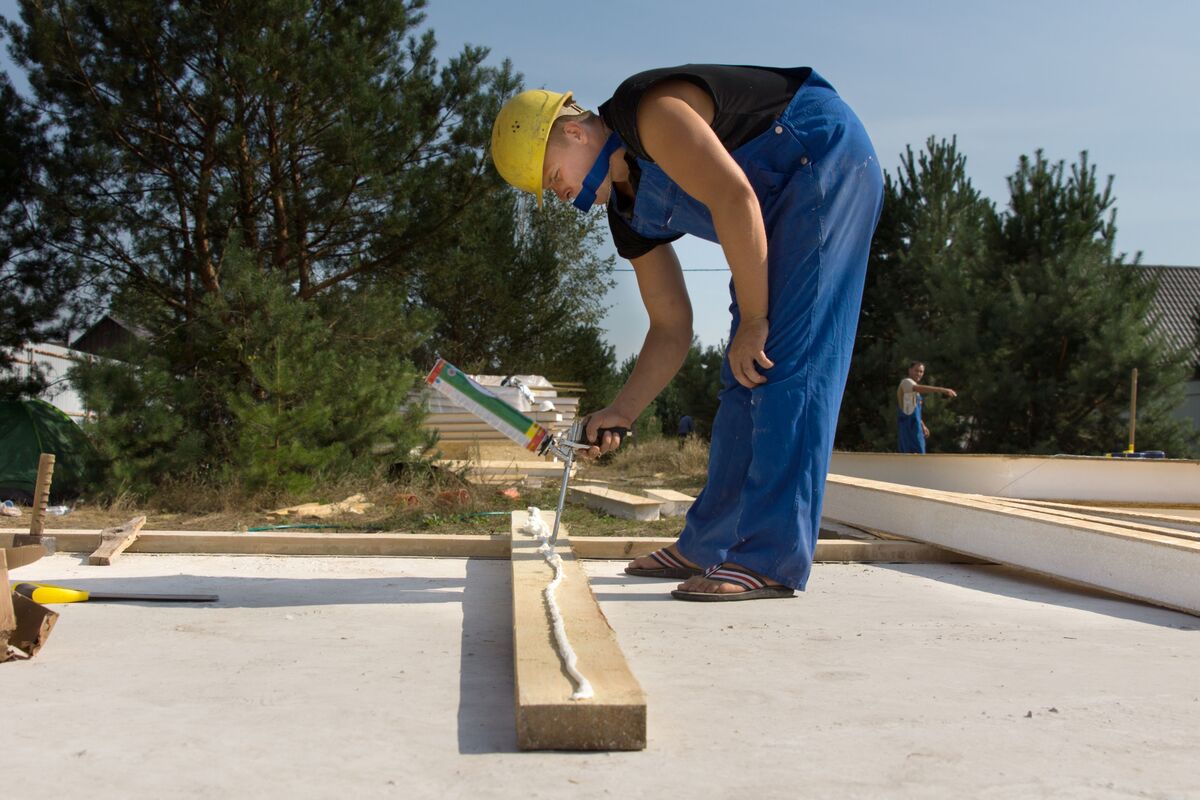

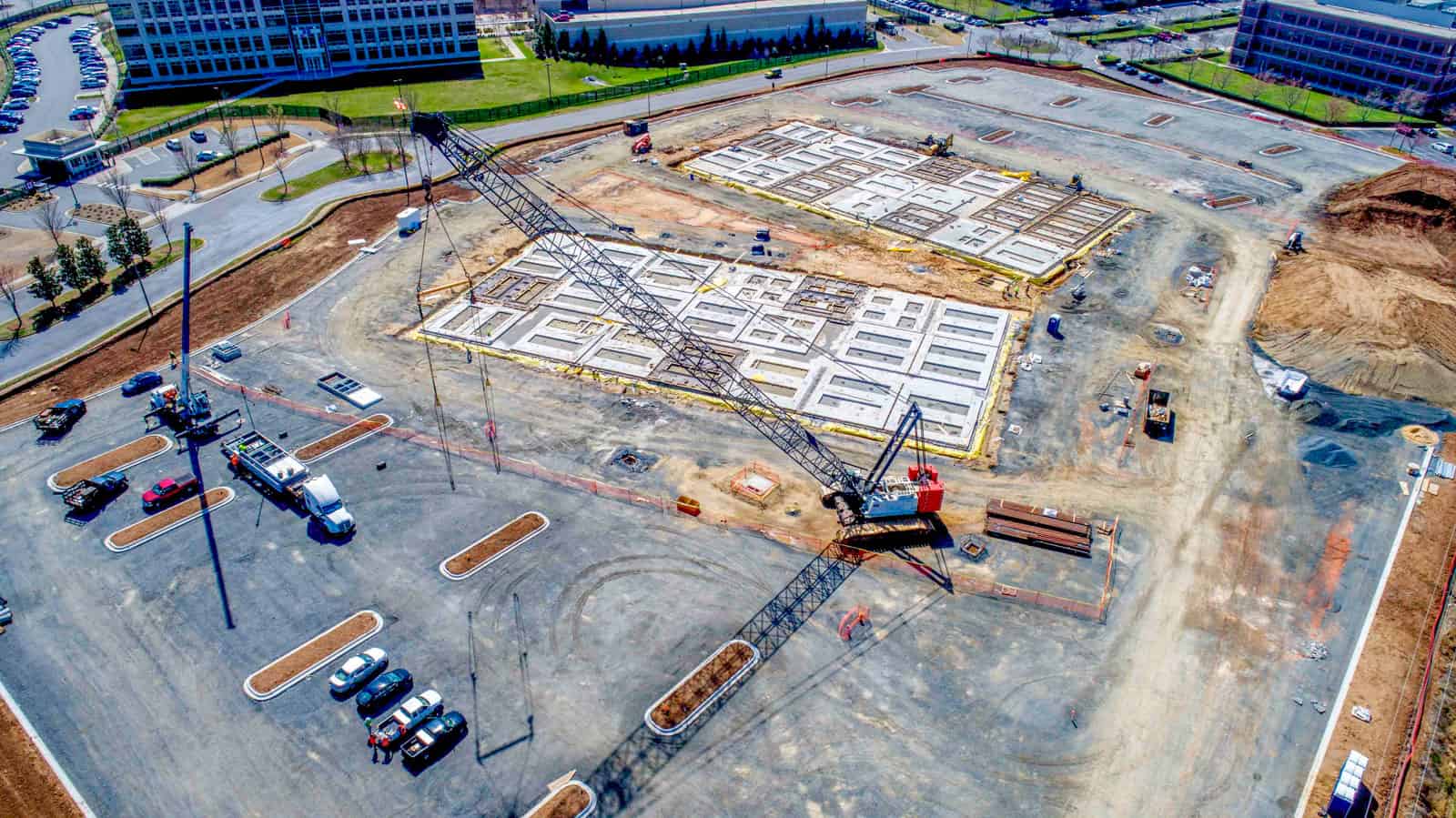
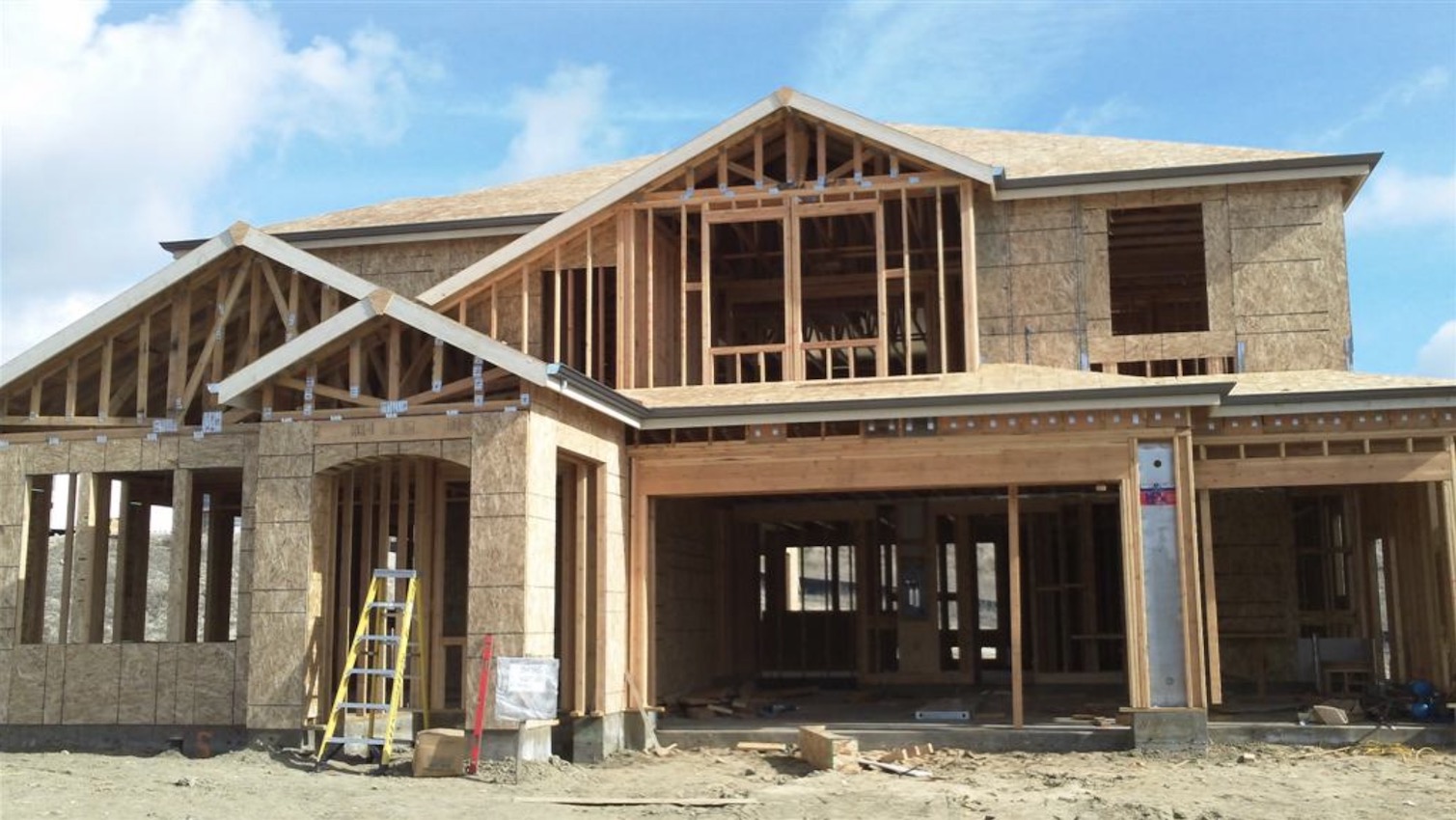
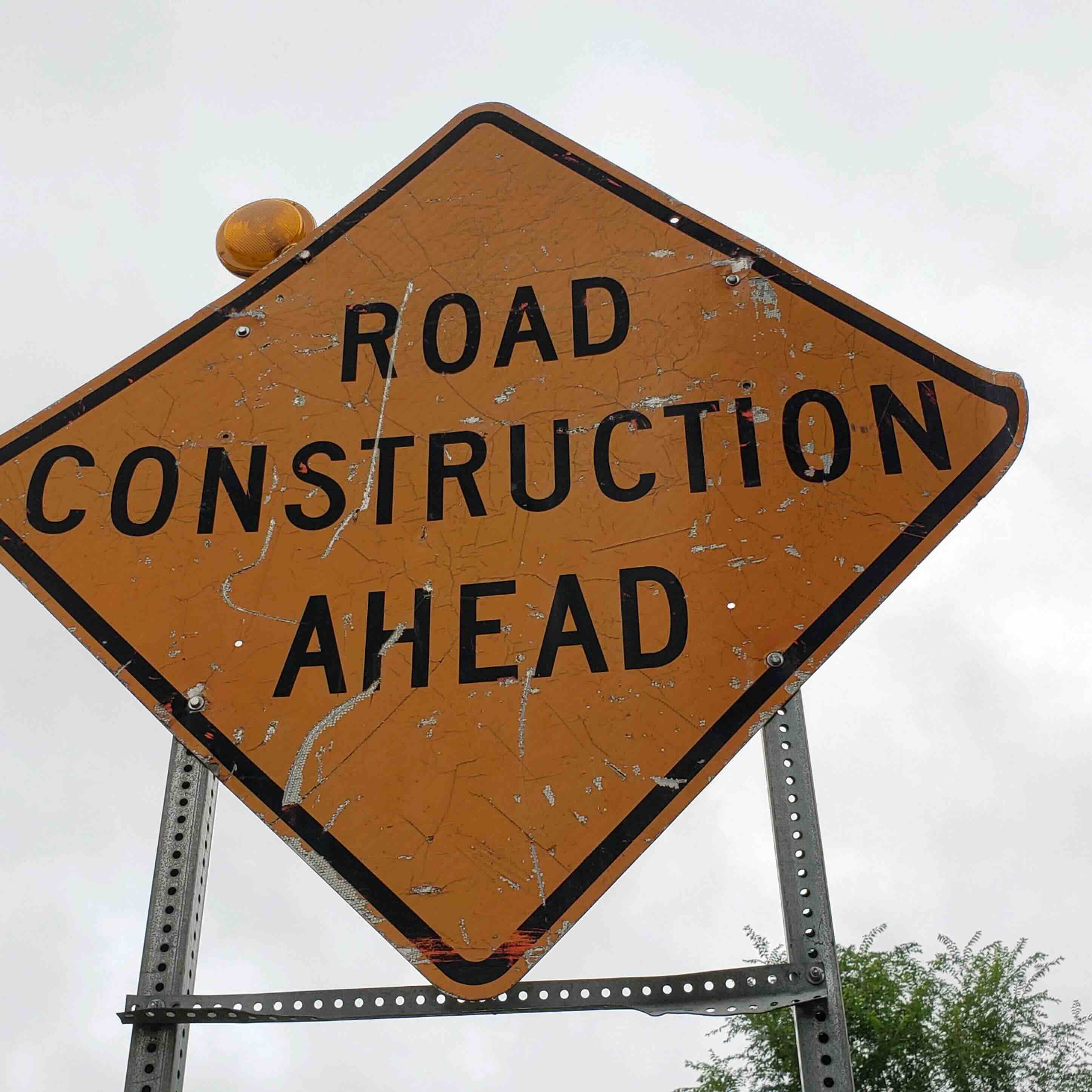









0 thoughts on “How Long Does Road Construction Take”